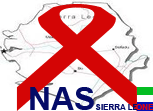Opinion: Coping with HIV and AIDS prevalence
Of the global total of 30 million persons living with HIV in 1997 some two-thirds (21 million) are in sub-Saharan Africa. Infection is concentrated in the socially and economically productive groups aged 15-45, with slightly more women infected than men. There are significant differences in the ages of infection of girls and boys with infection occurring at younger ages for girls (with girls and young women in some countries outnumbering boys and young men by factors of 5 or 6 in the age range 15-20). It is estimated that 12 million persons have died from HIV-related illnesses since the start of the epidemic worldwide, of whom approximately 9 million were Africans. It follows that the cumulative affected population in Africa taking into account spouses, children and elderly dependents must be of the order of 150 million1. This is a staggering proportion of the total population in sub-Saharan Africa – more than one quarter of Africans are directly affected by the HIV epidemic. Few people can remain unaffected in indirect ways, i.e. through the illness and death of relatives and colleagues.
The levels of HIV prevalence in parts of Africa are extremely high – in Southern Africa there are now many countries with HIV infection rates in adults in the range of 20-25%. The gap between rural and urban HIV rates — previously substantial — is now narrowing rapidly in many countries. For some urban populations HIV is now as high as 40-50% — rates of infection earlier considered wholly improbable. One consequence of the high HIV infection rates among women is the increasing number of children with HIV (through mother to child transmission). It is estimated that there are presently some 8 million children in Africa who have lost one or both parents to HIV-related illnesses, and that by 2010 these numbers will have increased to some 40 million. In many countries the proportion of children who have lost one or both parents will be as high as 20-25% by the end of the first decade of the new millennium. These trends have direct implications for intergenerational poverty and impose immense challenges for policy makers.
HIV infection is not confined to the poorest even though the poor account absolutely for most of those infected in Africa. There is limited evidence for a socio-economic gradient to HIV infection, with rates higher as one moves through the educational and socio-economic structure. It follows that the relationships between poverty and HIV are far from simple and direct and more complex forces are at work than just the effects of poverty alone. Indeed many of the non-poor in Africa have adopted and pursued life styles which expose them to HIV infection, with all the social and economic consequences that this entails. It follows that the capacity of individuals and households to cope with HIV and AIDS will depend on their initial endowment of assets – both human and financial. The poorest by definition are least able to cope with the effects of HIV/AIDS so that there is increasing immiseration for affected populations. Even the non-poor find their resources diminished by their experience of infection (morbidity and death), and there is increasing evidence in urban communities of an emerging class of those recently impoverished by the epidemic.
The effects of HIV and AIDS are reflected in the changes in Life Expectancy which is the best summary indicator of the effects of HIV and AIDS on countries with high levels of HIV prevalence. These data are remarkable for what they illustrate of the demographic impact of the epidemic on African populations. In many countries adult mortality has doubled and trebled over the past decade and this is directly attributable to HIV and AIDS. What is now being experienced by these populations are levels of Life Expectancy which were typical of the 1950s. This is not confined to those living in poverty but nevertheless is concentrated on those living in poverty who account absolutely for most of those who die from HIV-related illnesses. These data reflect HIV infection which occurred in the late 1980s, and since then in many countries HIV prevalence has intensified rather than diminished. Thus the outlook for further declines in Life Expectancy is bleak indeed, both in the aggregate and for those who are the poorest.
POVERTY AS PROCESS
It is easier to understand some of these complex issues if the bi-causal relationships are analysed through partial analysis – specifically by segmenting the stages of the epidemic so as to isolate some of the causal and consequential factors at work in the processes of immiseration. These processes are well illustrated by the different life-histories which are in the various boxes — selected precisely because they illustrate some of the important dynamic forces at work. But what needs also to be kept in mind are the aggregative effects of the HIV epidemic, for it will not only impoverish individuals and communities but will also erode the capacity of the socio-economic system through losses of human resources.
The characteristics of the poor are well known as also are some of the causal factors at work which contribute to a “culture of poverty” – the fact that the children of the poor often become the poor of succeeding generations. Poverty is associated with weak endowments of human and financial resources, such as low levels of education with associated low levels of literacy and few marketable skills, generally poor health status and low labour productivity as a result. An aspect of the poor health status of the poor is the existence amongst many Africans of undiagnosed and untreated STDs which is now recognised as a very significant co-factor in the transmission of HIV. Poor households typically have few if any financial or other assets and are often politically and socially marginalised. These conditions of social exclusion increase the problems of reaching these populations through programmes aimed at changing sexual and other behaviours.
It is not at all surprising in these circumstances that the poor adopt behaviours which expose them to HIV infection. It is not simply that IEC activities are unlikely to reach the poor (which is too often the case) but that such messages are often irrelevant and inoperable given the reality of their lives. Even if the poor understood what they are being urged to do it is rarely the case that they have either the incentive or the resources to adopt the recommended behaviours. Indeed to take the long-view in sexual or other behaviours is antithetical to the condition of being poor. For the poor it is the here and now that matters, and policies and programmes that recommend deferral of gratification will, and do, fall on deaf ears.
Even more fundamental to the condition of poverty is social and political exclusion. So HIV-specific programmes are neglectful of the interests of the poor and are rarely if ever related to their needs, and also unfortunately are other non-HIV related programme activities — such as those relating to agriculture and credit. More generally it is the absence of effective programmes aimed at sustainable livelihoods which limit the possibilities of changing the socio-economic conditions of the poor. But unless the reality of the lives of the poor are changed they will persist with behaviours which expose them to HIV infection (and all the consequences of this for themselves and their families).
Two examples of this state of affairs will perhaps suffice to indicate how poverty leads to outcomes which expose the poor to HIV. Firstly, poverty — especially rural poverty, and the absence of access to sustainable livelihoods, are factors in labour mobility which itself contributes to the conditions in which HIV transmission occurs. Mobile populations, which often consist of large numbers of young men and women, are isolated from traditional cultural and social networks and in the new conditions they will often engage in risky sexual behaviours, with obvious consequences in terms of HIV infection. Secondly, many of the poorest are women who often head the poorest of households in Africa. Inevitably such women will often engage in commercial sexual transactions, sometimes as CSW but more often on an occasional basis, as survival strategies for themselves and their dependents. The effects of these behaviours on HIV infection in women are only too evident, and in part account for the much higher infection rates in young women who are increasingly unable to sustain themselves by other work in either the formal or informal sectors.
There are increasing numbers of children infected with HIV through perinatal transmission (from mother to child). This reflects the large numbers of pregnant women who are HIV positive. Perinatal transmission is largely preventable through appropriate access to drugs (AZT) but these drugs and the necessary infrastructure for their delivery are more or less unattainable for most African women. Limitation of access to AZT is not confined to the poor although they account absolutely for most of the women who have the greatest need.
A related problem is the transmission of HIV through breast milk where there is now clear evidence that significant numbers of babies are infected by this route. This is avoidable and poverty is a clear factor in access to the methods for prevention of transmission to babies through breast milk. To prevent transmission through breast milk requires the ability to buy baby formula and access to clean water, plus an understanding of why these changes in practise are needed. Neither clean water nor the income for purchasing formula are available to the poor, so they are unable because of their poverty to adopt a form of prevention known to be successful as a means of limiting HIV transmission. This problem is resolvable through relatively inexpensive programme activities backed up by community mobilisation to ensure support to families. There are, therefore, no good reasons why action in this area are not being undertaken by governments, NGOs and donors.
Individuals, families and communities are impoverished by their experience of HIV and AIDS in ways that are typical for long drawn-out and terminal illnesses. It is a feature of HIV infection that it clusters in families with often both parents HIV positive (who in time experience morbidity and mortality). There is thus enormous strain on the capacity of families to cope with psycho-social and economic consequences of illness, such that many families experience great distress and often disintegrate as social and economic units. This experience is well reflected by the testimony of Lucy (see Box) who has seen her expectations as a mother and grandmother completely overturned by HIV/AIDS. Integral to her experience is the disappearance of traditional support processes for the elderly who can no longer anticipate being supported by their children. Instead the old are taking on burdens of care for children under conditions of increasing personal impoverishment and with associated living and other problems for both generations.
Poor families have a reduced capacity to deal with the effects of morbidity and mortality than do richer ones for very obvious reasons. These include the absence of savings and other assets which can cushion the impact of illness and death. The poor are already on the margins of survival and thus are also unable to deal with the consequent health and other costs. These include the costs of drugs when available to treat opportunistic infections, transport costs to health centres, reduced household productivity through illness and diversion of labour to caring roles, losses of employment through illness and job discrimination, funeral and related costs, and so on. In the longer term such poor households never recover even their initial level of living as their capacity is reduced through the losses of productive family members through death and through migration, and through the sales of any productive assets they once possessed. A true process of immiseration is now observable in many parts of Africa.
An important aspect of the coping experience of those infected and affected by HIV and directly related to poverty is the survival time from initial HIV infection to death in Africa. HIV infected persons in Africa live for a shorter time after initial infection than in developed countries, and this is not simply related to access to new anti-retroviral treatments (although this is now an important factor in the differential experience of rich and poor countries). Even prior to the availability of ARV in rich countries the evidence was that HIV infected persons in Africa had a survival time from infection to death of approximately 5-7 years, about half that in developed countries. The explanation is complex but is to a significant degree related to the poverty of most of those infected with HIV in Africa.
Elements in the survival-time-differential of Africans which are undoubtedly important include the inability to purchase relatively inexpensive drugs to deal with HIV opportunistic infections (such as TB and diarrhea), poor basic health and nutrition, limited psycho-social support and generally poor quality care both in hospital and home settings. These factors are all remedial through programme activities which can be provided at relatively low cost by the state and NGOs, although they remain well beyond the capacity of poor households to provide for themselves. Once provided they will extend and enhance the lives of those infected and will permit them to support both themselves and their families.
Central to these processes are often conditions of isolation and discrimination such that traditional forms of social support for the poor and the sick become inoperable. Societies characterised by random events such as illness and death have developed mechanisms of social support — traditional safety nets for those impoverished by disease and crop failure. What appears to be happening is that traditional systems of support are themselves in decline for structural reasons and are not being replaced by state mechanisms. At the same time the clustering of poverty caused by HIV, which concentrates spatially and in certain communities, places demands on disintegrating social support systems to which they cannot respond. Furthermore because HIV and AIDS are viewed in many communities as the outcome of reprehensible behaviour there is often an unwillingness both to seek help by those affected and negative responses often by those able to provide assistance. A dual process has emerged which is the antithesis of what is required if the poor are to deal with the social and economic costs of HIV and AIDS.
These intergenerational effects of HIV and AIDS are the longest lasting of all and relate to the mechanisms whereby the epidemic intensifies poverty and leads to its persistence. They are those processes which generate over time a culture of poverty — not created by the HIV epidemic but undoubtedly strengthened by the direct and indirect effects of the epidemic on social and economic development. They arise in part from the effects of the epidemic on human and institutional capacity where losses occur because of erosion of human resources. It follows that poverty reduction strategies will be increasingly ineffective in the face of an intensifying HIV epidemic which undermines sustainable development. Thus reducing poverty through sustainable development has become an even greater challenge than hitherto for countries in Africa.
It is possible to disaggregate the effects of the epidemic so as to perceive what is going on at the levels of families and communities. These will have their effects over many years and unlike the coping strategies noted above are longer term in their consequences. It is instructive to consider Kevina’s story (see Box) in order to understand the processes at work for all of the elements necessary for poverty to persist over time are revealed by what she writes. These experiences are now being repeated a million fold by other children throughout Africa, children who represent the future — who are the future for the continent.
Courtesy: HARA
Stay with Sierra Express Media, for your trusted place in news!
© 2010, https:. All rights reserved.






